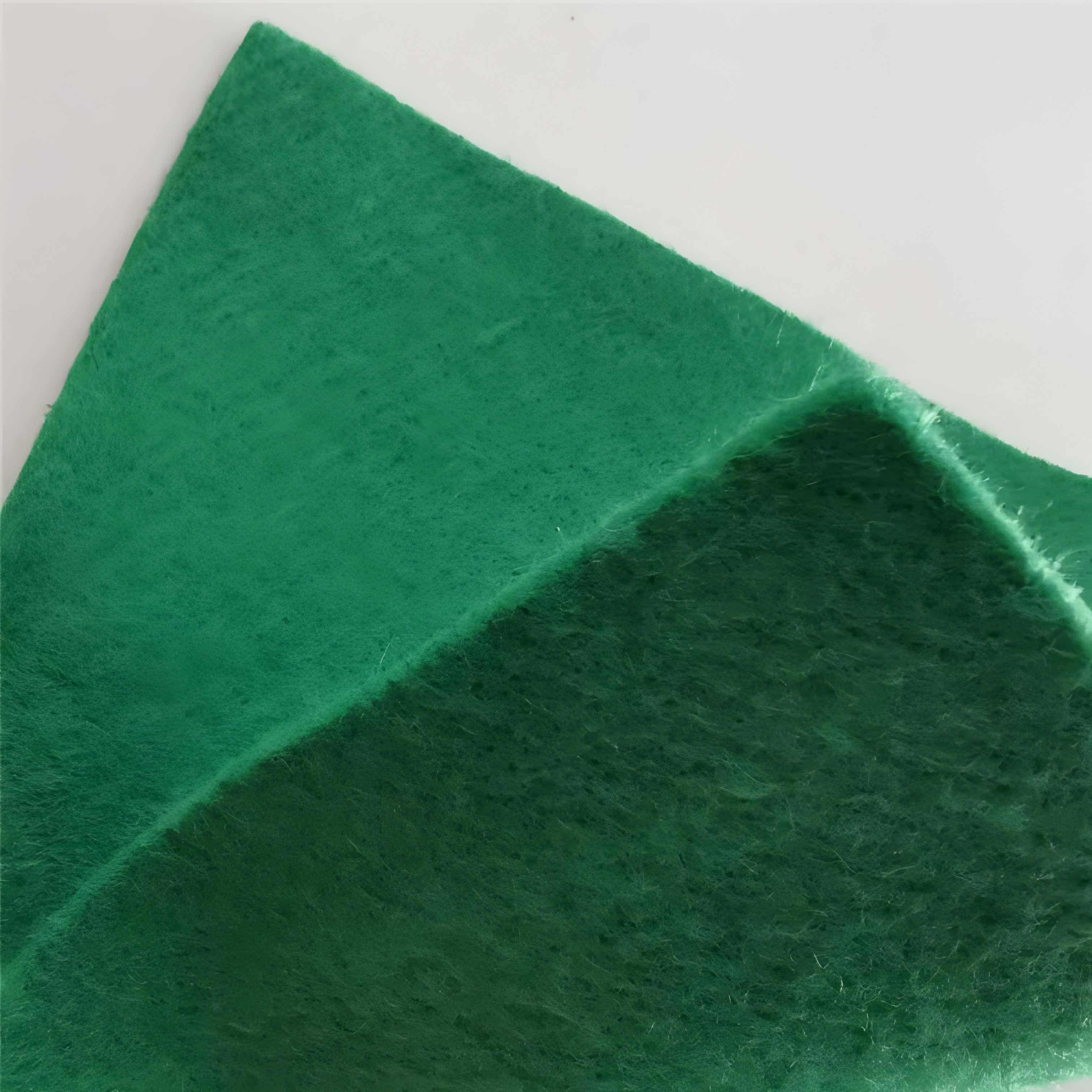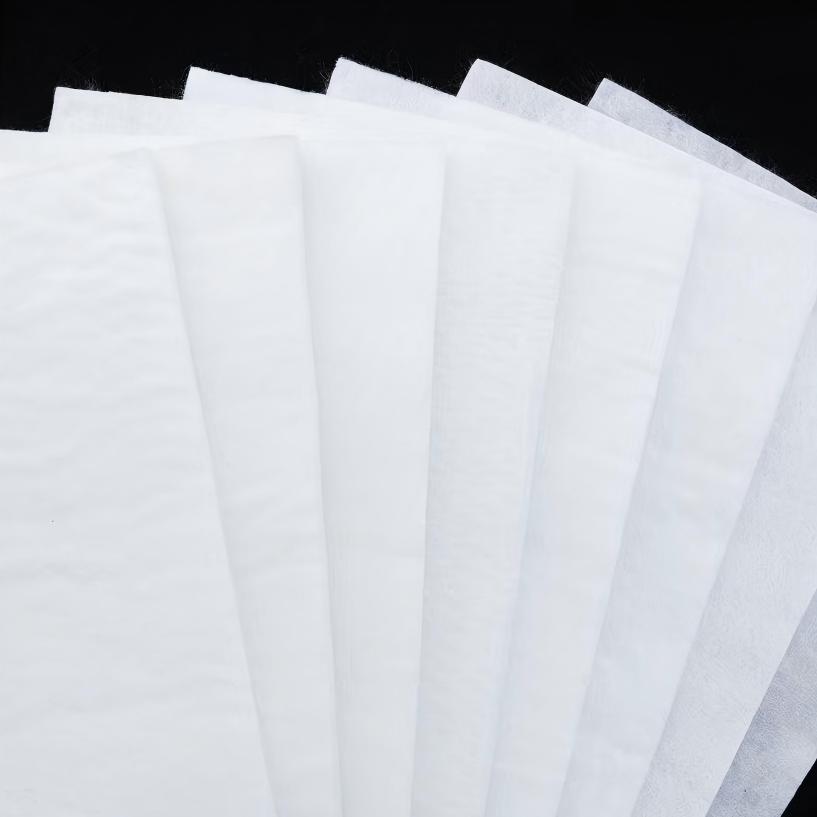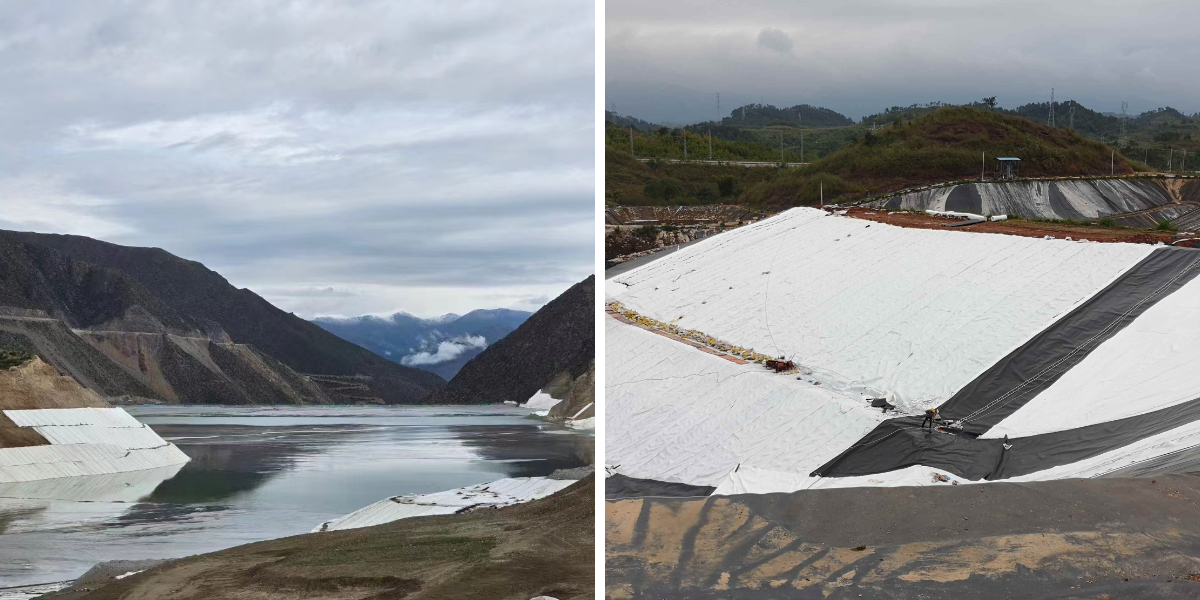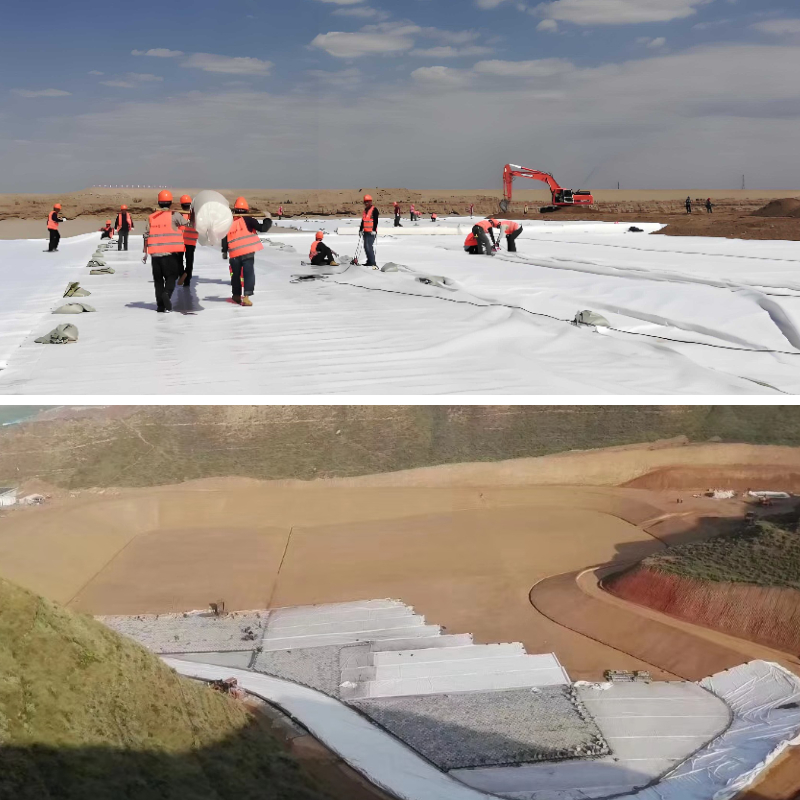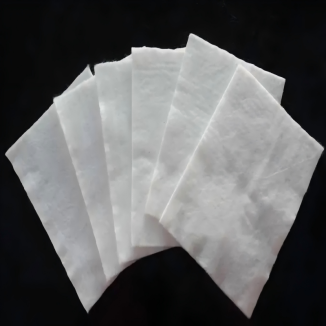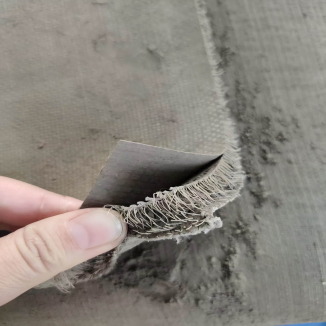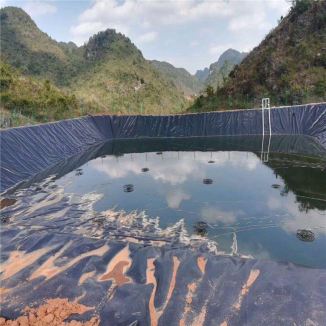Geotextile 130g m2
1. Enhance overall stability:By utilizing its high tensile strength, it disperses soil loads, effectively improves the strength and stability of structures such as foundations and slopes, and prevents deformation and damage.
2. Long term maintenance of structural separation:Separate soil layers or materials of different properties (such as roadbeds and soft soils) to prevent them from mixing with each other, maintain their respective design functions, and extend the service life of the project.
3. Efficient drainage and effective filtration:Allowing water to pass freely while effectively preventing soil particle loss perfectly solves the contradiction between smooth drainage system and soil stability.
4. Significant cost and schedule savings:Lightweight materials and easy construction can significantly reduce the amount of traditional materials such as stone and sand, thereby reducing project costs and shortening construction time.
Product Introduction:
Geotextile 130g m2 is a type of geosynthetics, which is a textile or non-woven fabric made of a permeable polymer (usually synthetic fibers such as polypropylene, polyester, etc.). It is widely used in fields related to "soil" such as civil engineering, water conservancy engineering, environmental engineering, and transportation engineering. As a component of engineering, it plays a role in strengthening, protecting, draining, filtering, isolating, and preventing seepage.
Classification
1. Long filament spun clay geotextile: also known as polyester geotextile, has characteristics such as high strength, low elongation, durability, and corrosion resistance.
2. Short fiber needle punched geotextile: Made from polyester curled short fibers as raw materials, it is processed through processes such as loosening, combing, shuffling, mesh laying, and needle punching.
3. Woven geotextile: made from polypropylene and acrylic flat yarn, widely used in geotechnical engineering such as water conservancy and power.
4. Woven geotextile: Using high-strength industrial synthetic fibers such as polypropylene and polyester as raw materials, it is woven into a regular interwoven structure with high comprehensive bearing capacity.
5. Non woven geotextile: mainly made of polyester short fibers, but can also produce needle punched non-woven geotextile with mixed fibers such as polypropylene and nylon according to requirements.
Feature
1. Physical properties: Lightweight, with a width of generally 4-6 meters and a length of 50-100 meters, the unit area mass is between 100-1000g/m ², and the specifications are complete.
2. Mechanical properties: High strength, using plastic fibers, can maintain sufficient strength and elongation in both dry and wet conditions, which can enhance the tensile strength and deformation resistance of soil.
3. Chemical properties: Corrosion resistance, able to resist corrosion for a long time in soil and water of different pH levels, good resistance to microorganisms, and not damaged by microorganisms and insects.
4. Hydraulic performance: Good permeability, gaps between fibers, good water permeability and conductivity, can form drainage channels inside the soil.
Effect
1. Isolation: Isolate building materials with different physical properties to prevent material loss and mixing, maintain overall structure and function, and enhance the load-bearing capacity of the structure.
2. Filtration: When water flows from the fine soil layer into the coarse soil layer, it allows the water to pass through, effectively intercepting soil particles, fine sand, etc., and maintaining the stability of water and soil engineering.
3. Drainage: It has good water conductivity and can discharge excess liquids and gases from the soil structure.
4. Reinforcement: Enhance the tensile strength and deformation resistance of soil, improve soil quality, and strengthen the stability of building structures.
5. Protection: When water flows on the soil, it will diffuse, transmit or decompose concentrated stress, preventing the soil from being damaged by external forces and protecting the soil.
6. Anti puncture: Combined with geomembrane to form a composite waterproof and anti-seepage material, it plays a role in preventing puncture.
Product Parameters:
project | metric | ||||||||||
Nominal strength/(kN/m) | |||||||||||
6 | 9 | 12 | 18 | 24 | 30 | 36 | 48 | 54 | |||
1 | Longitudinal and transverse tensile strength / (kN/m) ≥ | 6 | 9 | 12 | 18 | 24 | 30 | 36 | 48 | 54 | |
2 | Maximum elongation at maximum load in longitudinal and transverse directions/% | 30~80 | |||||||||
3 | CBR top penetration strength /kN ≥ | 0.9 | 1.6 | 1.9 | 2.9 | 3.9 | 5.3 | 6.4 | 7.9 | 8.5 | |
4 | Longitudinal and transverse tearing strength /kN | 0.15 | 0.22 | 0.29 | 0.43 | 0.57 | 0.71 | 0.83 | 1.1 | 1.25 | |
5 | Equivalent aperture O.90(O95)/mm | 0.05~0.30 | |||||||||
6 | Vertical permeability coefficient/(cm/s) | K× (10-¹~10-), where K=1.0~9.9 | |||||||||
7 | Width deviation rate /% ≥ | -0.5 | |||||||||
8 | Unit area mass deviation rate /% ≥ | -5 | |||||||||
9 | Thickness deviation rate /% ≥ | -10 | |||||||||
10 | Thickness coefficient of variation (CV)/% ≤ | 10 | |||||||||
11 | Dynamic perforation | Puncture hole diameter/mm ≤ | 37 | 33 | 27 | 20 | 17 | 14 | 11 | 9 | 7 |
12 | Longitudinal and transverse fracture strength (grab method)/kN ≥ | 0.3 | 0.5 | 0.7 | 1.1 | 1.4 | 1.9 | 2.4 | 3 | 3.5 | |
13 | Ultraviolet resistance (Xenon arc lamp method) | Longitudinal and transverse strength retention rate% ≥ | 70 | ||||||||
14 | Ultraviolet resistance (fluorescence UV lamp method) | Longitudinal and transverse strength retention rate% ≥ | 80 | ||||||||
Product Applications:
1. Transportation infrastructure
Highway and railway subgrade: laid between soft soil foundation and gravel base to prevent gravel sinking and soft soil upwelling, effectively disperse loads, reduce subgrade thickness, prevent reflection cracks, and significantly improve road life and stability.
Airport runway and apron: Ensure the stability of the pavement structure layer and prevent uneven settlement under heavy aircraft loads and vibrations.
2. Water conservancy engineering
Embankment, seawall, reservoir slope protection: used under slope protection materials such as stones and concrete blocks to prevent the loss of lower soil particles caused by water flow erosion, while ensuring the smooth discharge of seepage and stabilizing the bank slope.
Drainage blind ditch and filter layer: wrapped around the gravel drainage blind ditch to form an efficient filter layer, preventing the surrounding soil from blocking the drainage channel and maintaining the long-term smoothness of the drainage system.
3. Environmental Engineering
Landfill site:
Function:
Lower layer: Protect the anti-seepage geomembrane from being punctured by sharp objects.
Leachate collection layer: wraps around the drainage pipeline as a filter layer to prevent blockage.
Cover layer: assists in drainage and air circulation.
Tailings dam and pollution site treatment: prevent the migration of harmful substances and protect the surrounding environment.
4. Construction Engineering
Basement waterproof protection: laid outside the waterproof membrane to form a buffer layer, preventing stones in the backfill soil from damaging the waterproof layer, and at the same time directing water seepage to the drainage system.
Roof garden drainage: Covering the drainage board to prevent planting soil particles from blocking the drainage channel, ensuring smooth roof drainage.
5. Other applications
Tunnel engineering: used behind the lining as a drainage layer to introduce rock seepage into the drainage system.
Agriculture: Used for isolation and filtration of farmland drainage channels and nursery ground.
Ecological slope protection: combined with vegetation, fixing soil and preventing soil erosion.
The core application of geotextile lies in its four functions: isolation, reinforcement, filtration, and drainage. In different engineering projects, it may mainly play one or two functions, or it may play multiple roles at the same time, making it an indispensable new basic material in modern engineering construction.


